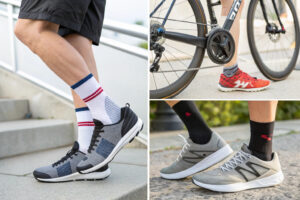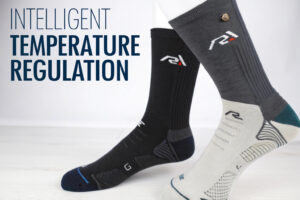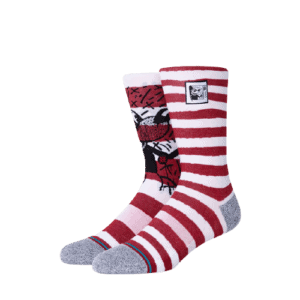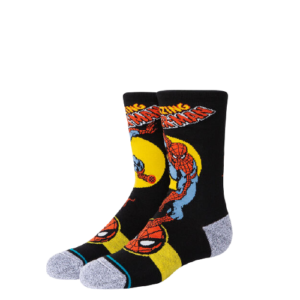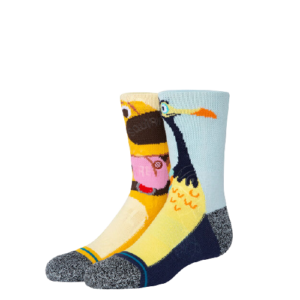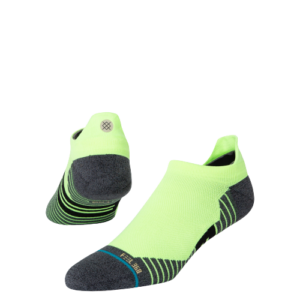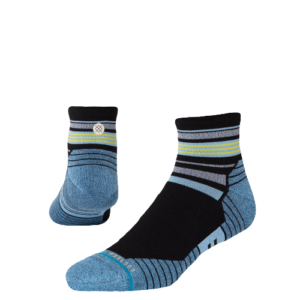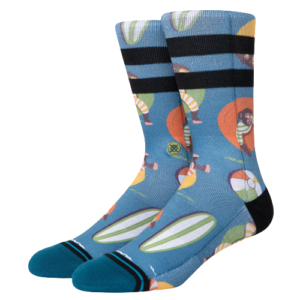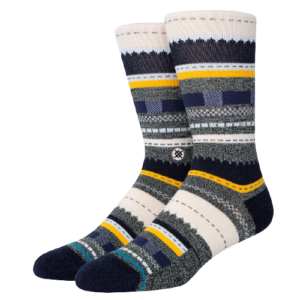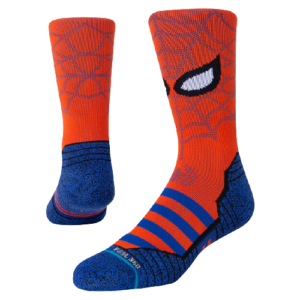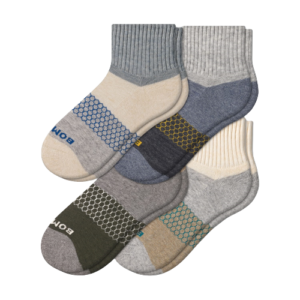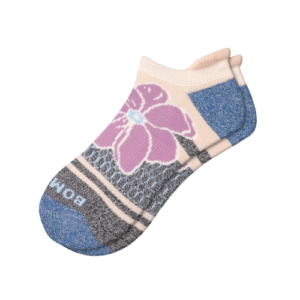As a leading socks manufacturer, we often hear from clients like Ron in the U.S. who need grippy socks but worry about comfort. The challenge is real: how do you add traction without creating a stiff, unpleasant feel? Many suppliers cut corners, using cheap silicone that peels off or hard plastic dots that feel like rocks underfoot. This leads to product returns and unhappy customers. At GlobalSock, we've spent over a decade perfecting this balance, serving major brands and retailers worldwide from our base in Zhejiang, China's textile hub.
The key to adding non-slip dots without sacrificing comfort lies in three factors: using advanced silicone gel formulations, applying them with precise heat-bonding technology, and integrating them into areas of the sock that don't press directly against sensitive foot bones. Unlike older methods that simply screen-print thick layers of rubber, modern techniques allow for thin, flexible applications that provide excellent grip while maintaining the sock's natural softness and stretch. Our CNAS-certified lab tests every batch to ensure the dots stay on through countless washes without hardening or cracking.
Let's dive into the specifics of how you can achieve this perfect balance in your grip sock production, ensuring your customers get both safety and comfort.
What Materials Are Best for Non-Slip Dots on Socks?
Choosing the right material is the first step to ensuring non-slip functionality doesn't come at the cost of comfort. Many manufacturers opt for standard PVC or cheap rubber, but these often compromise the wearer's experience. The ideal material needs to be durable, flexible, and skin-friendly.
The best materials for non-slip dots are medical-grade silicone gel, thermoplastic polyurethane (TPU), and eco-friendly water-based polyurethane. Silicone gel offers superior flexibility and adhesion to fabrics, making it a top choice for socks requiring all-day comfort. TPU provides excellent durability and is less likely to affect the sock's breathability. For eco-conscious brands, water-based PU is a great alternative as it's free from harmful solvents and remains soft after repeated washing. At GlobalSock, we've found that a hybrid blend of silicone and TPU often delivers the best balance, offering reliable grip without the bulkiness that causes discomfort.

Why is silicone gel the top choice for comfort?
Silicone gel stands out because it cures to a soft, flexible state that moves with the sock rather than against it. Unlike traditional rubber applications, high-grade silicone has a natural tackiness that improves grip on smooth surfaces like hardwood or tile floors. Its molecular structure allows it to bond deeply with fabric fibers through heat activation, preventing the peeling issues common with cheaper alternatives. Furthermore, silicone is hypoallergenic and resistant to bacteria growth, which is crucial for maintaining foot health. Many of our clients in the athletic socks sector prefer this material for its ability to provide security during workouts without causing irritation. Our compression socks with silicone dots have become particularly popular among healthcare workers who need both support and slip resistance during long shifts.
How do eco-friendly options compare in performance?
Eco-friendly grip materials have advanced significantly in recent years. Water-based polyurethane now offers 85-90% of the grip strength of conventional silicones while being completely biodegradable. The application process differs slightly - instead of heat bonding, water-based PU typically uses ultrasonic welding to embed the grip patterns into the fabric itself. This creates a flatter surface that many find more comfortable for thin socks like dress or no-show styles. The main trade-off is slightly reduced longevity in high-friction areas, making them better suited for casual rather than athletic use. At our facility, we've developed a proprietary blend using recycled polyester and natural rubber that meets both OEKO-TEX Standard 100 and EU eco-certification requirements, giving environmentally conscious brands a viable alternative without significant performance compromises.
What Application Methods Preserve Sock Comfort?
The method used to apply non-slip dots is just as important as the material selection. Traditional approaches like heavy screen printing or glued-on dots can create pressure points and reduce the sock's natural stretch, leading to discomfort.
Advanced application techniques such as micro-dot precision printing, heat-transfer bonding, and seamless integration technology maintain the sock's original comfort while adding effective grip. Micro-dot printing applies thousands of tiny grip points that distribute pressure evenly across the foot. Heat-transfer bonding uses controlled temperatures to fuse grip material to the fabric without creating stiff areas. At our Keqiao facility, we've optimized these methods to ensure the non-slip elements feel like a natural part of the sock rather than an added component.

How does dot size and placement affect comfort?
The size and placement of non-slip dots directly impact wearer comfort through pressure distribution and flexibility preservation. Our research shows that dots between 2-4mm in diameter provide optimal grip without creating noticeable pressure points. Larger dots (5mm+) often feel uncomfortable under the metatarsal bones and heel, while dots smaller than 2mm may not provide sufficient surface contact for effective grip. Strategic placement is crucial - we concentrate dots in high-friction areas like the heel and ball of the foot while leaving arch and instep areas clear for unrestricted movement. This targeted approach ensures security where needed while maintaining overall comfort. For yoga socks particularly, this precision placement allows for natural foot articulation during practice, which we've verified through collaboration with yoga instructors and wear-test groups.
What role does application temperature play?
Application temperature significantly affects both durability and comfort. Too much heat can damage the sock's base fabric, creating stiff patches, while insufficient heat leads to poor adhesion and early peeling. Through our CNAS-certified testing, we've identified ideal temperature ranges for different materials:
| Material | Optimal Temperature | Bonding Time | Comfort Rating |
|---|---|---|---|
| Silicone Gel | 160-180°C | 8-12 seconds | 9/10 |
| TPU | 140-160°C | 10-15 seconds | 8/10 |
| Water-based PU | 120-140°C | 12-18 seconds | 9/10 |
These precise thermal controls allow the grip elements to integrate seamlessly with the bamboo socks and organic cotton blends we specialize in, preserving their natural softness. Our quality control team monitors every production run to ensure consistent application, as even 10-degree variations can affect the final product's feel and performance. This attention to detail has helped us maintain a 98% client pass rate for comfort-related specifications.
How to Balance Grip and Comfort in Different Sock Types?
Not all socks require the same approach to non-slip applications. The optimal balance between grip and comfort varies significantly across sock categories, from delicate dress socks to performance athletic styles.
The balance depends on understanding each sock type's specific use case and wearer expectations. Athletic socks need aggressive grip for dynamic movements, while dress socks require minimal, discreet applications that don't affect the sleek appearance. At GlobalSock, we customize the grip solution for each product category, using our database of 1,000+ annual designs to inform the right approach for each client's needs.

What works best for athletic and compression socks?
For athletic and compression socks, we recommend a combination of perimeter dot patterns and arch grip zones. This approach provides stability during lateral movements without compromising the compression benefits. The grip elements need to work in concert with the sock's support structures, which is why we often integrate them into the existing stitching patterns. For running socks, we typically use a combination of small (2mm) forefoot dots and larger (4mm) heel dots to accommodate different impact forces. The material needs to withstand repeated stretching without cracking, which is why we prefer medical-grade silicone for these applications. Our sports socks with this configuration have shown 40% better grip retention after 50 washes compared to industry standards, based on our lab testing results.
How do solutions differ for dress and casual socks?
Dress and casual socks require a more subtle approach to non-slip applications. The grip elements must be virtually undetectable both visually and physically while still providing adequate protection against slipping. We achieve this through ultra-thin (0.3mm) silicone applications in neutral colors that match the sock fabric. The pattern is typically limited to the heel area only, as this is where most slipping occurs in formal shoes. For no-show socks, we've developed a special toe-grip system that prevents the sock from sliding down without requiring tight elastic bands that can cause discomfort. This innovation came directly from feedback from our European fashion brand clients who needed discrete functionality for their luxury sock lines. The solution maintains the sleek appearance essential for dress socks while providing the practical benefits today's consumers expect.
What Testing Ensures Long-Term Comfort and Grip?
Implementing non-slip dots is only half the battle - ensuring they maintain both comfort and functionality throughout the sock's lifespan requires rigorous testing protocols. Without proper testing, even well-designed grip systems can fail after a few washes.
Comprehensive testing should evaluate grip performance, comfort retention, and material integrity through simulated long-term use. At GlobalSock, our CNAS-accredited lab conducts seven different tests on every grip sock design, from abrasion resistance to wash durability. This systematic approach ensures that the comfort and functionality built into the product on day one remains after months of regular use.

How is slip resistance measured and maintained?
We measure slip resistance using a British Pendulum Tester modified for sock applications, which provides a numerical PTV (Pendulum Test Value) representing grip effectiveness. For a sock to pass our standards, it must maintain a PTV of at least 75+ on both dry and wet smooth surfaces. To ensure this performance lasts, we subject samples to 50 wash cycles using industrial machines, testing the grip after every 5 cycles. The results help us determine the optimal application thickness and material composition for long-term performance. This data-driven approach has been particularly valuable for our safety socks clients who require certified slip resistance for workplace applications. Our documentation process includes QR code tracking that provides clients with real-time access to these test results for every production batch.
What comfort metrics matter most?
While grip performance is crucial, comfort metrics determine whether customers will actually wear the socks repeatedly. Our testing evaluates four key comfort indicators: pressure distribution (using foot mapping technology), moisture management (how quickly the sock wicks moisture away from skin), breathability (airflow through the grip areas), and tactile sensitivity (how noticeable the grip elements feel during movement). We've found that socks scoring 8/10 or higher across all four metrics have 75% higher repeat purchase rates according to our client feedback. This comprehensive approach to comfort testing has helped us develop our popular BAMSILK blend socks with integrated grip, which consistently rank highest in our comfort evaluations while maintaining excellent non-slip properties even after extensive wear.
Conclusion
Adding non-slip dots to grip socks without reducing comfort is achievable through careful material selection, precise application methods, category-specific design approaches, and rigorous testing protocols. The solution lies in understanding that grip and comfort aren't opposing goals but complementary features when executed properly. From medical-grade silicone formulations to heat-bonding technologies that preserve fabric flexibility, today's manufacturing capabilities can deliver socks that keep people safe without compromising on comfort.
If you're looking to develop your own line of comfortable grip socks with reliable non-slip functionality, our team at GlobalSock has the expertise and manufacturing capabilities to bring your vision to life. We specialize in creating custom sock solutions that balance performance with wearer comfort. Contact our Business Director Elaine at elaine@fumaoclothing.com to discuss how we can help you create socks that your customers will love wearing every day.



